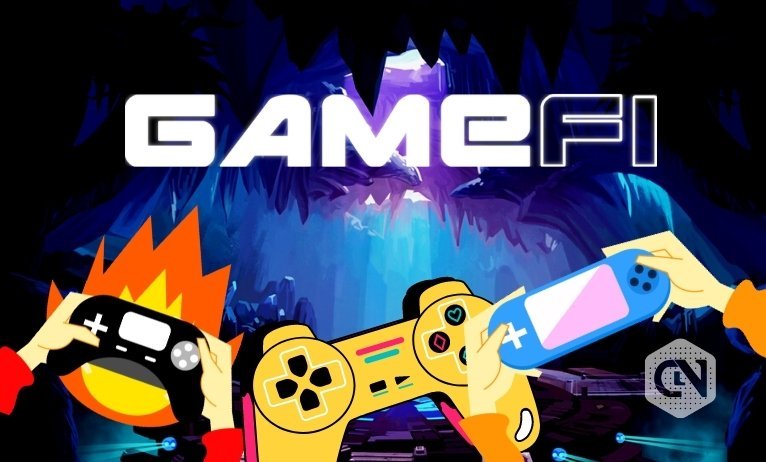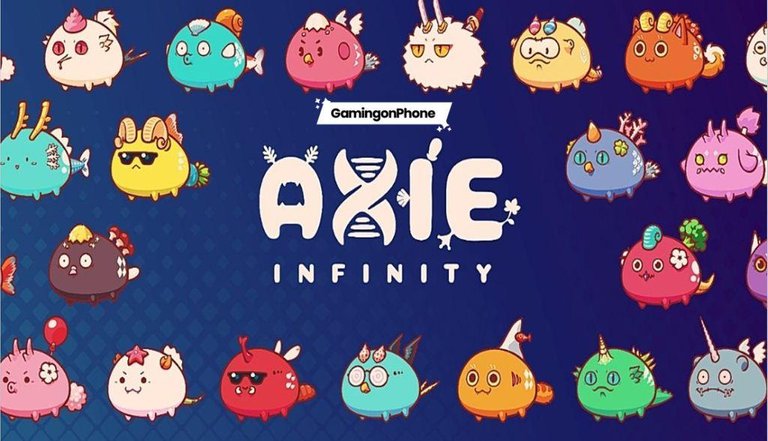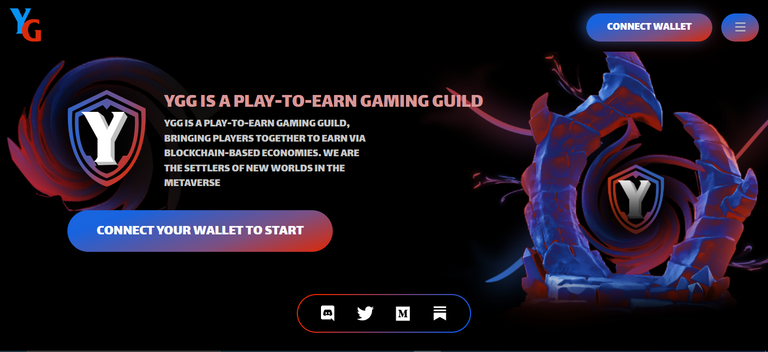Blockchain gaming has proven to be one of the hottest sectors and leading edge ventures in crypto in 2021. We've seen a range of gaming tokens pulling 100X"s or more, heavyweight VC's pouring considerable sums of cash into the development of the gaming sphere and a vast global community of players experimenting with its new set of generating opportunities. So in today's post I'll be giving you insight on basic things to know about the sector and where to look for hidden gems of opportunities.
Before I proceed let me tell you a little about me. I'm Ibemorah Chubby, currently a medical student but crypto is my new hobby. I've decided to share my discoveries on everything crypto so stick around I promise you'll enjoy this disco.
It would interest you to know that according to a recent report by accenture the full value of the global gaming industry now exceeds 300 billion dollars! Surprising yeah? but that's the truth. It was perhaps only to be expected that the lucrative gaming industry and the cutting edge infrastructure of blockchain technology would jump into bed together at some point. This is because gaming applications being developed on the decentralized frameworks offered by blockchain allow players to leverage some if the most innovative DEFI functionalities and NFT implementations opening up a completely alternative spectrum of financial opportunities. the elements have therefore enabled blockchain-based protocol to turn into a real catalyst in the space and not just for their gamified implementations of DEFI principles but because they have progressively started merging with the economic artistic and unique financial propositions inherent in Non-fungible tokens.
SO WHAT IS GAMEFI?
The term gamefi is a amalgam of two words "game" and "finance" and it obviously means the monetization of video gaming. Now gamefi has become a bit of a buzz word lately and it is actually a rather broad term in itself as some titles generally considered to be gamefi may have entirely different financial elements to others. For instance, some blockchain games revolve around rewarding players for completing in game task while others may enable revenue generation from the various underlying assets that a player owns. with that said it is important to note that games considered to be a part of this exciting and emerging sector in crypto in most cases require players to leverage a mix of skills and strategy to generate yield and although luck may be a component, it is by no means the predominant factor in determining who is eligible for financial rewards
let's see a bit of history
The origin of the term gamefi can be traced back to November 2019 when the founders of Mix Marvel a blockchain game publishing platform delivered speeches at the Wu Zhen world blockchain conference on how the underlying technology of blockchain could completely revolutionize the video gaming industry. Perhaps more famously however, the term gamefi was visible first used by Andre Cronje the founder of yearnfinance in a tweet back in September 2020 and ever since gamefi has been used on a regular basis to describe those games with a built-in set of financial elements enabled by blockchain technology. While the term gamefi has only recently entered the everyday lingo, it history actually dates back almost as far as the early days of Satoshi. for instance those early Minecraft service with bitcoin integrations, the 2013 website, gambit.com, pioneering games like bombermine and those early peer-to-peer services enabling players to monetize mainstream titles with bitcoin. They embody some of the earlier titles of what we now consider to be in effect gamefi structures. But with the launch of Ethereum back in 2015 and with the development of the Erc-721 token standard for Nfts, a plethora of exciting opportunities suddenly opened up for players and game developers tapping into their wilders imaginations and ushering in am innovative paradigm for the whole gaming industry.
Currently, gamefi comes in many different shapes and sizes and as such the mechanics by which players can generate yield through their game play can vary from game to game. That being said there is some common ground here and this is because blockchain based gaming protocols primarily revolves around 3 main features and these are;
- Play-To-Earn
- DeFi Components
- Asset Ownership
Now since its inception back in 2018, Axie infinity has helped architect a new genre in the gaming vertical and has focused on building the infrastructure necessary for players to enjoy the benefits of advanced blockchain powered gameplay while also profiting handsomely along the way. This new gaming vertical initially pioneered by the Cryptokitties movement and more recently brought to life by Axie Infinity is commonly referred to as Play-To-Earn.
What's fascinating about Play-To-Earn is that as opposed to earlier blockchain games where users rely mainly on random chances to make profit, P2E has actually introduced a fully fledged suite of financial utilities and advanced in-game economies built on the set of both Fungible and Non-fungible tokens. For instance, the underlying pioneering force of Axie infinity relies on the entirely unique value-rich and thriving microeconomic structure revolving around its platform and its fungible and non-fungible tokens alone. This is because in parallel to players buying, breeding and selling those funny looking pokemon inspired Axie Nfts, the games proprietary and in-house P2E ecosystem has fueled the development of an Axie native business model based on staking, farming and arbitrage opportunities. More information about Axie infinity in subsequent writeups. Players can generate income in P2E games in three different ways;
- Players can earn in-game tokens which can be exchanged for other coins {Example of which is Splinterlands DEC token} these tokens can be acquired by completing daily tasks or quest or by battling other axes and players.
Players can earn or trade in-game Nfts. These in-game Nfts may represent an item ,a character or another collectible in the game and depending on the game itself, they can be purely cosmetic or fulfill a specific use case and posses a diverse set of utilities. players can use theses in-game Nfts and generate reward by battling other players with it. Its a pretty mind-blowing concept and it really does illustrate the power and potential of Nfts.
Another way through which players can generate income is through staking. Some Nft games allow users to lock up their in-game fungible token or Nft assets in smart contracts which enables players to generate staking rewards and earn interest. This is a fascinating new development coming out of both the P2E and DeFi ecosystem and this is because it seems to be the next logical step when it comes to staking in gamified DeFi protocols. One of the most relevant examples when it comes to staking in the P2E ecosystem is Yield Guild Games a blockchain gaming guild.
________What is YGG and how does a blockchain gaming guild work?_________
YGG is a P2E gaming guild, bringing players together to earn via blockchain-based economics. YGG works through an intricate sub dao structure it enables players to lock funs and essentially stake their tokens into a specific environment that the guild is actively involved in for instance, investors could stake their tokens in a YGG Sub dao dedicated specifically to the farming and breeding of Axie and Nfts allowing them to capture the value and reap the reward from the guild's Axie breeding endeavors alternatively if they'd like to have the exposure to the reward system offered by another blockchain game, they'll be able to do so directly from the YGG portal.
________________The importance of Nfts in the gaming industry________________
by tokenizing in-game items as Nfts, gamers can literally own and control what they buy, earn and generate during their gameplay for the first time ever. furthermore, with in-game Nfts, its more than just being able to prove that a characters accessories and wearables are rare, expensive or unique as Nfts enable players to leverage an extraordinary spectrum of additional use cases and and utilities that where yet to be seen before Nfts finally came into the equation. these include for instance, the ability to buy and sell in-game Nfts on secondary market places, move them cross-chain and between multiple games while also fundamentally retaining the underlying value of their in=game assets as a whole. This is simply not feasible nor possible within most triple A games today. So forget all those funky call of Duty skin guys because when it comes down to it, you actually do not own them. it is important to note that in-game Nfts are revolutionizing the way players engage with their time spent in the virtual domain. this is done by allowing them to leverage a new and alternative paradigm of economic propositions fueled by digital asset ownership and in-game Nfts. so Axies and Splinterlands aside, gamefi oriented Nft implementations can also be found in the majority of metaverse based protocols and online virtual worlds including the Sandbox, Decentraland, Somnium space amongst others. these virtual worlds enable their inhabitants to monetize their time spent in game via digital assets ownership. At the very heart of these metaverse ecosystems is the concept of land ownership wit some land plots located within top-tier virtual environments going for some truly jaw-dropping amounts. What's particularly interesting about gamefi land projects is that land owners can monetize their digital real estate in much the same way that they would be able to in the physical world because these land plots are represented as Nfts, owners can outright sell their won land to prospective buyers. they can also develop an attraction that may generate over time such as metaverse event or concert hall in a prime location or they could lease it out for someone else to monetize essentially making their in-world land plots a real gamefi infused proposition.
That concludes this section on Gamefi.
Posted Using LeoFinance Beta



